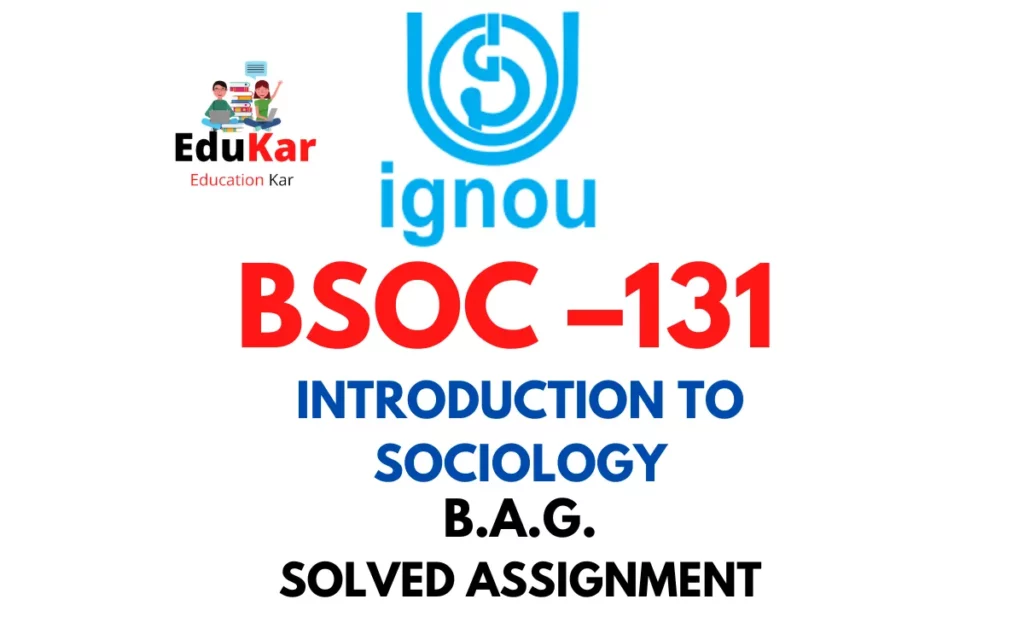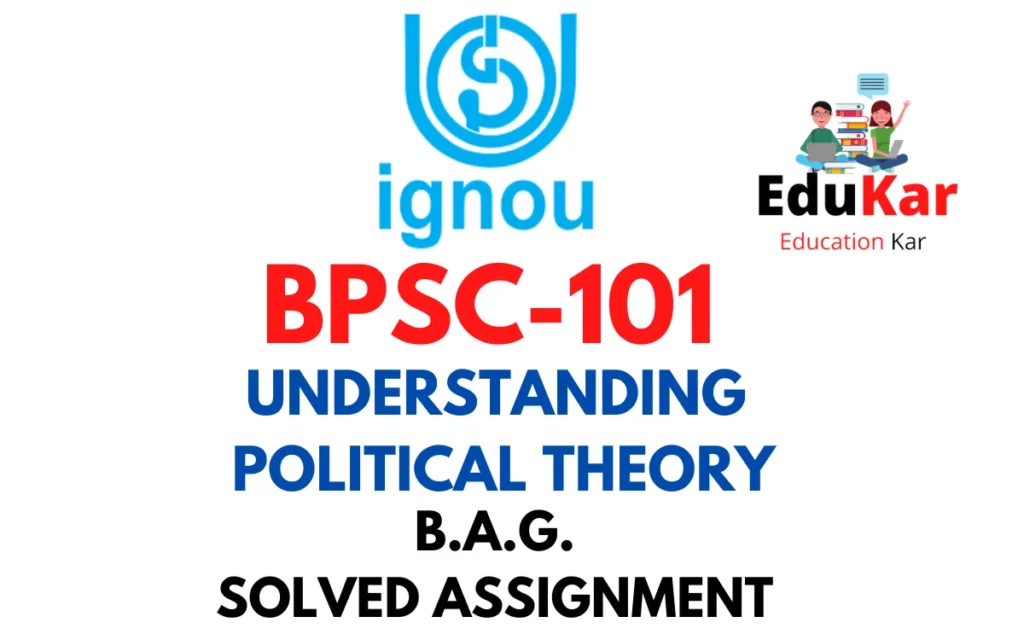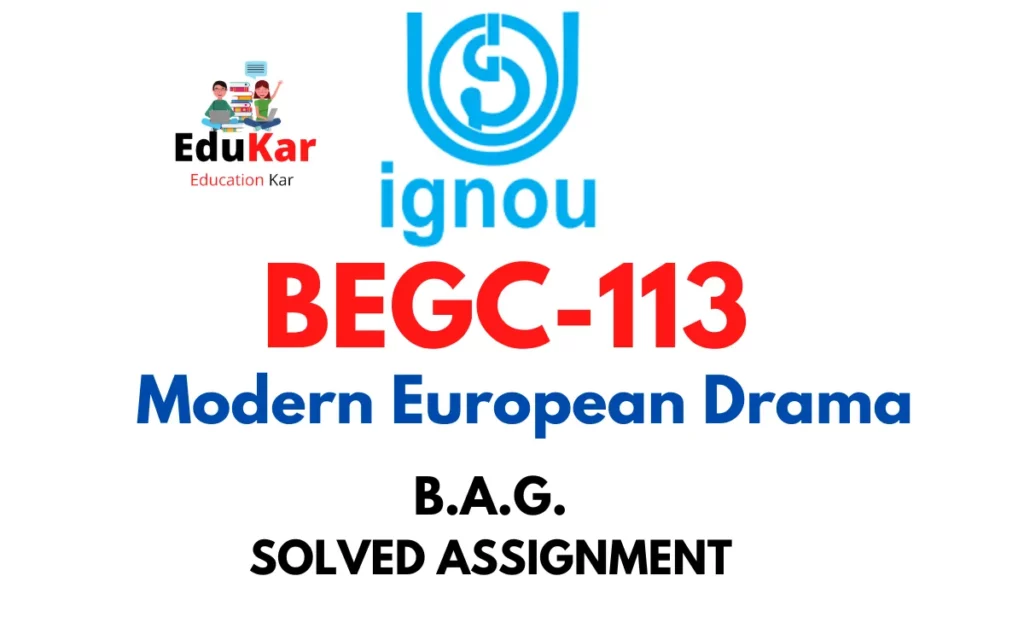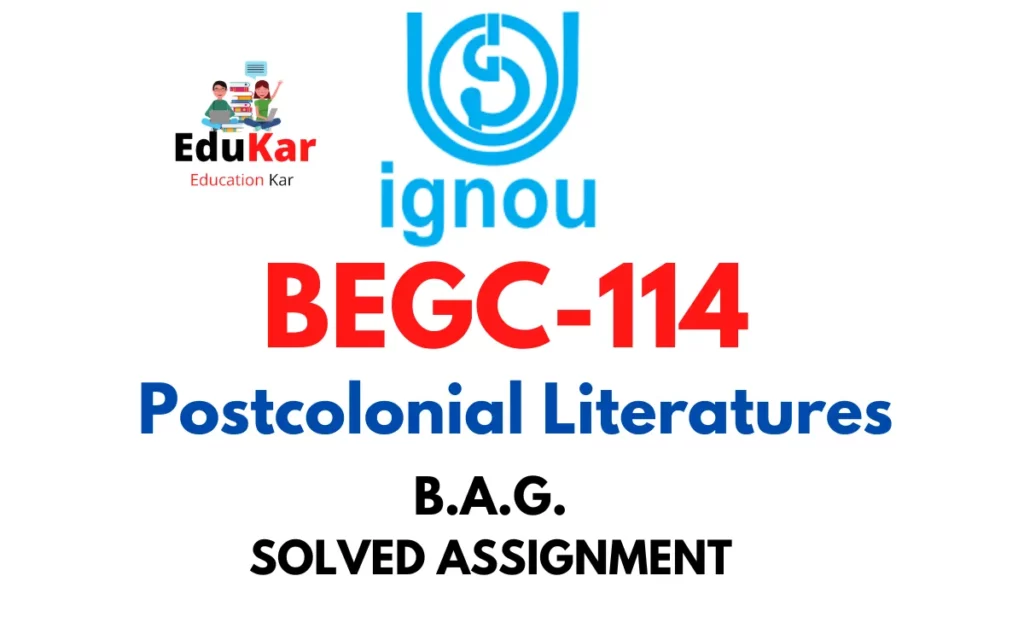Contents
- 1 Answer any five questions. All questions carry equal marks. (20 x 5 = 100)
- 2 1. Briefly explain the impact of French Revolution on Literature.
- 3 2. Explain the salient features of British Romantic poetry.
- 4 3. What romantic tendencies are present in Burn’s poetry?
- 5 4. Comment on Blake’s portrayal of children and childhood in his Songs of Innocence and Experience.
- 6 5. Explain Coleridge’s ideas on ‘Fancy’ and ‘Imagination’.
- 7 6. What is the usefulness of poetry as stated by Shelley in his “Defence”?
- 8 7. How does Crabbe describe the lives and sufferings of the village inmates?
- 9 8. Romantic poetry is replete with mystery, aura and quaintness of phenomena. How is ‘‘The Rime of the Ancient Mariner’’ a masterpiece of romantic poetry in this sense?
- 10 9. What special effects do poetic devices play in Southey’s poem? Analyse the poetic devices with reference to the text you have studied.
- 11 10. How did Mary conceive and create a world-famous novel Frankenstein?
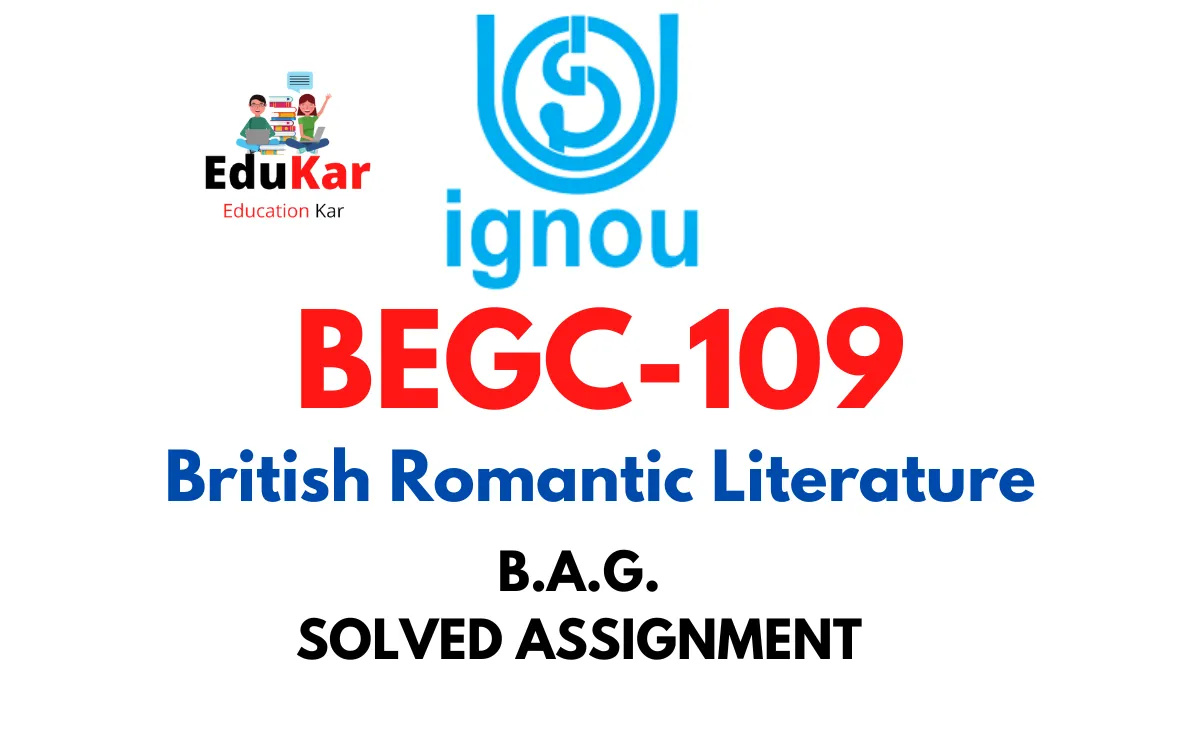
| Title | BEGC-109: IGNOU BAG Solved Assignment 2022-2023 |
| University | IGNOU |
| Degree | Bachelor Degree Programme |
| Course Code | BEGC-109 |
| Course Name | British Romantic Literature |
| Programme Name | Bachelor of Arts (General) |
| Programme Code | BAG |
| Total Marks | 100 |
| Year | 2022-2023 |
| Language | English |
| Last Date for Submission of Assignment: | For June Examination: 31st April For December Examination: 30th September |

Answer any five questions. All questions carry equal marks. (20 x 5 = 100)
1. Briefly explain the impact of French Revolution on Literature.
Ans: The French Revolution had a significant impact on literature, not only in France but also throughout Europe. Here are a few ways in which the revolution influenced literary works:
- The Revolution inspired literary works that reflected the political and social upheaval of the time. Many writers, such as Victor Hugo, Alexandre Dumas, and Stendhal, wrote about the events of the Revolution and their aftermath.
- The Revolution challenged traditional forms of literature and encouraged experimentation. Romanticism, a literary movement that emphasized emotion and imagination, emerged as a response to the Enlightenment and the rationalism that characterized the 18th century.
- The Revolution had a democratizing effect on literature. The idea of equality, which was central to the Revolution, led to the creation of a broader readership, and literature became more accessible to the general public.
- The Revolution led to the emergence of new literary genres, such as the political pamphlet and the revolutionary song, which were used to spread ideas and mobilize people.
- The Revolution had a lasting impact on French language and literature. The French Revolution played a significant role in the development of modern French, and many of the literary works produced during this period are still considered classics today.
Overall, the French Revolution had a profound impact on literature, and its effects can still be felt today in the works of many authors.
2. Explain the salient features of British Romantic poetry.
Ans: British Romantic poetry refers to a literary movement that emerged in the late 18th and early 19th centuries. This movement was characterized by a focus on individualism, nature, and the imagination. Here are some of the salient features of British Romantic poetry:
- Emphasis on nature: British Romantic poets emphasized the importance of nature, often using it as a source of inspiration and as a way to explore the human condition. They saw nature as a symbol of spiritual and emotional renewal and used it to express their own emotions and experiences.
- Celebration of individualism: British Romantic poets celebrated individualism and the power of the human imagination. They believed that individuals had the power to create their own destinies and that the imagination could transform the world.
- Focus on emotion and subjectivity: British Romantic poets often explored intense emotions and the subjective experience of the individual. They were interested in exploring the inner lives of their characters and often used personal experiences and emotions to inform their writing.
- Use of symbolism and metaphor: British Romantic poets often used symbolism and metaphor to explore complex emotions and ideas. They used natural imagery and metaphors to convey a wide range of emotions and ideas, from joy and happiness to sadness and melancholy.
- Interest in the supernatural: British Romantic poets often explored supernatural themes, including ghosts, witches, and supernatural creatures. They were interested in exploring the boundaries between reality and fantasy, and often used the supernatural as a way to explore deeper truths about the human experience.
- Interest in the past: British Romantic poets often looked to the past for inspiration, drawing on historical events and figures to inform their writing. They were interested in exploring the relationship between the past and the present and often used the past as a way to comment on contemporary society.
3. What romantic tendencies are present in Burn’s poetry?
Ans: Robert Burns, a Scottish poet who lived from 1759 to 1796, is widely regarded as one of the most prominent voices of the Romantic era. He was known for his poetry that celebrated the Scottish people, their traditions, and their way of life. Here are some of the Romantic tendencies present in Burns’s poetry:
- A focus on nature: Like many Romantic poets, Burns was interested in nature, often using natural imagery in his poetry. His poems often celebrated the natural beauty of Scotland, such as in his famous poem “To a Mouse,” which reflects on the relationship between man and nature.
- An emphasis on emotion and feeling: Burns’s poetry was known for its emotional depth, expressing feelings of joy, love, and sorrow. His poetry often explored themes of love, heartbreak, and longing, as well as the challenges of daily life.
- A celebration of the common people: Burns’s poetry was rooted in the lives of ordinary people, celebrating their experiences and the importance of their work. He often wrote about farmers, laborers, and other working-class individuals, using their experiences to comment on society as a whole.
- A connection to folklore and tradition: Burns drew heavily on the rich folk culture and traditions of Scotland in his poetry. He celebrated the customs and traditions of his country, including its music and poetry, and was a leading figure in the revival of traditional Scottish culture during his time.
- A rejection of the artificial: Burns was critical of the artificiality and superficiality of urban life, and often contrasted it with the simplicity and naturalness of rural life. His poetry celebrated the virtues of simplicity, authenticity, and naturalness, and rejected the excesses of the urban lifestyle.
4. Comment on Blake’s portrayal of children and childhood in his Songs of Innocence and Experience.
Ans: William Blake’s “Songs of Innocence and Experience” is a collection of poems that explores the themes of childhood, innocence, and the loss of innocence. In the poems, Blake portrays children as pure and innocent beings who are capable of experiencing joy, love, and wonder. However, he also shows how the harsh realities of life can lead to the corruption of innocence, and the loss of childhood wonder.
In “Songs of Innocence,” Blake portrays children as pure and innocent beings who are free from the corruption of the adult world. In “The Chimney Sweeper,” for example, Blake depicts the life of a young chimney sweep who is happy and content, despite his difficult circumstances. The poem suggests that the child’s innocence protects him from the harsh realities of his life.
In “Songs of Experience,” Blake portrays the loss of innocence and the corruption of childhood. The poem “The Chimney Sweeper” from this collection depicts a different perspective on the life of the chimney sweep. The poem shows how the sweep has been robbed of his innocence and has been forced to work in a dangerous and abusive environment. The poem suggests that the harsh realities of life have corrupted the child and that he has lost his innocence as a result.
Blake also portrays children as having a unique perspective on the world. In “The Little Black Boy,” for example, Blake portrays a black child who has a deep understanding of the beauty and unity of all people, despite the racial and cultural differences that divide them.
5. Explain Coleridge’s ideas on ‘Fancy’ and ‘Imagination’.
Ans: Samuel Taylor Coleridge, the English poet and philosopher, wrote extensively on the subjects of fancy and imagination. He believed that these two terms represented distinct and important aspects of human creativity and thought.
Fancy, according to Coleridge, is the power of the mind that allows us to create new and fantastic combinations of ideas, images, and concepts. It is a more superficial and playful form of creativity that is concerned with the decorative and ornamental aspects of art. Fancy is associated with the lighter side of human thought, and is often characterized by a sense of whimsy and caprice.
In contrast, imagination, according to Coleridge, is a deeper and more profound form of creativity that is concerned with the deeper truths and meanings of human experience. Imagination is a higher faculty of the mind that allows us to perceive the world in new and innovative ways. It is a more serious and transformative form of creativity that is concerned with the philosophical and spiritual dimensions of human experience.
Coleridge believed that the two faculties of fancy and imagination were closely related, but that they were distinct and different aspects of human creativity. He argued that while fancy was important for its decorative and playful qualities, imagination was the more important and essential of the two faculties. Imagination was capable of transforming the way we perceive the world, and of revealing deeper truths and meanings that were hidden from our ordinary ways of seeing and understanding.
In Coleridge’s view, the poet was the highest embodiment of the imaginative faculty. The poet was able to use the power of imagination to create new and innovative forms of poetry that revealed the deeper truths and meanings of human experience. Coleridge’s ideas on fancy and imagination had a profound influence on the Romantic poets, and helped to shape the development of English poetry in the 19th century.
6. What is the usefulness of poetry as stated by Shelley in his “Defence”?
Ans: In his essay “A Defence of Poetry,” Percy Bysshe Shelley argues that poetry is not only a form of artistic expression but also a fundamental human activity with practical uses and benefits for society.
Shelley begins by asserting that poetry is the “highest form of expression of which humanity is capable.” He argues that poetry has the power to elevate and inspire people, to stir the imagination and the emotions, and to awaken us to the beauty and meaning of the world. He believes that poetry has the power to create a sense of unity and community among people, by providing a shared language and a shared experience of the world.
Shelley also argues that poetry has practical uses and benefits for society. He suggests that poetry can act as a moral guide, by inspiring people to act with compassion, justice, and kindness. He believes that poetry can also act as a means of social criticism, by exposing the injustices and inequities of society and calling for change.
Moreover, Shelley sees poetry as a means of expanding human knowledge and understanding. He believes that poetry can provide insights into the nature of the human experience and the world around us that are not accessible through other forms of knowledge. Poetry, he argues, can help us to see the world in new and innovative ways, and to explore the mysteries and complexities of human existence.
7. How does Crabbe describe the lives and sufferings of the village inmates?
Ans: In his poem “The Village,” George Crabbe offers a realistic and often harsh portrayal of rural life in late eighteenth-century England. Through his vivid descriptions of the village and its inhabitants, Crabbe exposes the harsh realities of life in a small community, where poverty, disease, and ignorance are common.
- Poverty: Crabbe describes the poverty of the village inmates in detail, highlighting their lack of resources and the difficulties they face in making ends meet. For example, in the first stanza, he describes the “struggling with want, the miseries of life” faced by the villagers. He goes on to describe the “hovels formed of mud and straw” where they live, and the difficult work they do just to survive.
- Suffering: Crabbe also portrays the suffering endured by the villagers, including illness, hunger, and the loss of loved ones. He describes the “feverish lips” and “burning cheek” of a dying woman, and the grief of a young woman whose baby has died. The villagers also suffer from the harshness of their environment, with the “squalid alleys” and “noxious streams” contributing to the spread of disease and illness.
- Ignorance: Crabbe also describes the ignorance of the villagers, who lack education and knowledge of the wider world. He notes that the villagers “read no books” and “care for nothing beyond the narrow bounds of their own village.” This ignorance contributes to their suffering, as they lack the resources and knowledge to improve their lives.
Through these descriptions, Crabbe creates a powerful image of the lives and sufferings of the village inmates. He exposes the harsh realities of life in a small community, where poverty, disease, and ignorance are common, and offers a critique of the social and economic systems that perpetuate these conditions. Overall, “The Village” is a powerful and insightful portrayal of rural life in late eighteenth-century England, and a testament to Crabbe’s skill as a poet and social critic.
8. Romantic poetry is replete with mystery, aura and quaintness of phenomena. How is ‘‘The Rime of the Ancient Mariner’’ a masterpiece of romantic poetry in this sense?
Ans: Samuel Taylor Coleridge’s “The Rime of the Ancient Mariner” is a classic example of Romantic poetry, replete with mystery, aura, and the quaintness of phenomena. The poem is full of supernatural elements and a sense of the unknown that is characteristic of Romantic literature.
- Mystery: The poem is full of mystery, particularly surrounding the mariner’s voyage and his encounter with the albatross. The mysterious, “uncanny” aspects of the natural world are highlighted in the poem, such as the “slimy creatures” that “crawled with legs upon the slimy sea.” The Mariner’s curse and the sudden appearance of supernatural elements such as the ghostly crew and the ship itself are also sources of mystery in the poem.
- Aura: The poem creates a strong sense of aura, particularly in its descriptions of the natural world. The moonlit sea, the red sun, and the otherworldly beauty of the natural world are all described in vivid detail, creating a sense of awe and wonder. The poem also has an aura of the supernatural, particularly in the scenes involving the ghostly crew and the Mariner’s curse.
- Quaintness: The poem’s archaic language and use of old-fashioned expressions also contribute to its quaintness. The poem’s use of older words and expressions such as “shrieve,” “slain,” and “mortal agony” creates a sense of historical distance and adds to the poem’s overall atmosphere of mystery and strangeness.
9. What special effects do poetic devices play in Southey’s poem? Analyse the poetic devices with reference to the text you have studied.
Ans: Robert Southey’s poem “The Inchcape Rock” is a narrative ballad that tells the story of the consequences of the destruction of the bell on the Inchcape Rock. The poem employs a variety of poetic devices to enhance its dramatic effect and reinforce its themes.
- Rhyme scheme: The poem is written in a traditional ballad form with an ABAB rhyme scheme, which helps to create a sense of musicality and rhythm. This form of rhyme scheme gives the poem a sing-song quality, making it easy to remember and memorable.
- Alliteration: The poem also makes use of alliteration, the repetition of consonant sounds at the beginning of words, to emphasize certain ideas. For example, the phrase “And the perilous path was smooth and white” uses alliteration to draw attention to the danger of the situation.
- Imagery: The poem makes use of vivid imagery to create a sense of the danger and desolation of the sea. For example, the line “The sea-birds screamed as they wheeled round” uses imagery to create a sense of the chaos of the storm and the danger it poses.
- Personification: The personification of the Inchcape Rock as a “silent sentinel” and the bell as a “holy buoy” give them human-like qualities that emphasize their importance to sailors. The personification creates a sense of tragedy when the bell is destroyed and the rock becomes a deadly hazard.
- Repetition: The repetition of the phrase “the Inchcape bell” throughout the poem reinforces the importance of the bell and its function in warning sailors of the danger of the rock. The repetition also serves to emphasize the consequences of its destruction.
- Metaphor: The poem uses the metaphor of the “foeman’s stealthy tread” to describe the sound of the bell being cut from the rock. This metaphor creates a sense of malice and treachery, as if an enemy has sabotaged the safety of sailors.
10. How did Mary conceive and create a world-famous novel Frankenstein?
Ans: Mary Shelley (née Godwin) was born in 1797 in London, England. She was the daughter of two prominent intellectuals, the feminist writer Mary Wollstonecraft and the philosopher William Godwin. When Mary was a teenager, she fell in love with the poet Percy Bysshe Shelley, who was already married. They eloped together in 1814 and traveled through Europe, where they met other writers and intellectuals.
In the summer of 1816, Mary, Percy, and some of their friends, including Lord Byron and John Polidori, rented a villa in Switzerland. During their stay, they entertained themselves by reading ghost stories and discussing ideas related to science and philosophy. One night, they challenged each other to write their own horror stories, and this is how Mary came up with the idea for “Frankenstein.”
Mary’s inspiration for the novel came from a dream she had in which she saw a scientist creating a monster out of body parts. The dream was likely influenced by the scientific and philosophical discussions she had with her companions, as well as by the contemporary debates on the nature of life and the possibility of reanimating dead matter.
Mary spent several years writing the novel, which was first published anonymously in 1818. The novel tells the story of a young scientist named Victor Frankenstein, who creates a humanoid creature out of dead body parts. The creature, however, turns out to be monstrous, and Victor must confront the consequences of his creation.
“Frankenstein” was an instant success and has become a cultural icon, inspiring countless adaptations in film, theater, and literature. Mary’s novel is considered a masterpiece of gothic fiction and a landmark work of science fiction. Its enduring popularity can be attributed to its timeless themes, including the dangers of unchecked scientific progress, the limits of human knowledge, and the consequences of isolation and loneliness.
How to Download BEGC-109 Solved Assignment?
You can download it from the www.edukar.in, they have a big database for all the IGNOU solved assignments.
Is the BEGC-109 Solved Assignment Free?
Yes this is absolutely free to download the solved assignment from www.edukar.in
What is the last submission date for BEGC-109 Solved Assignment?
For June Examination: 31st April, For December Examination: 30th October




